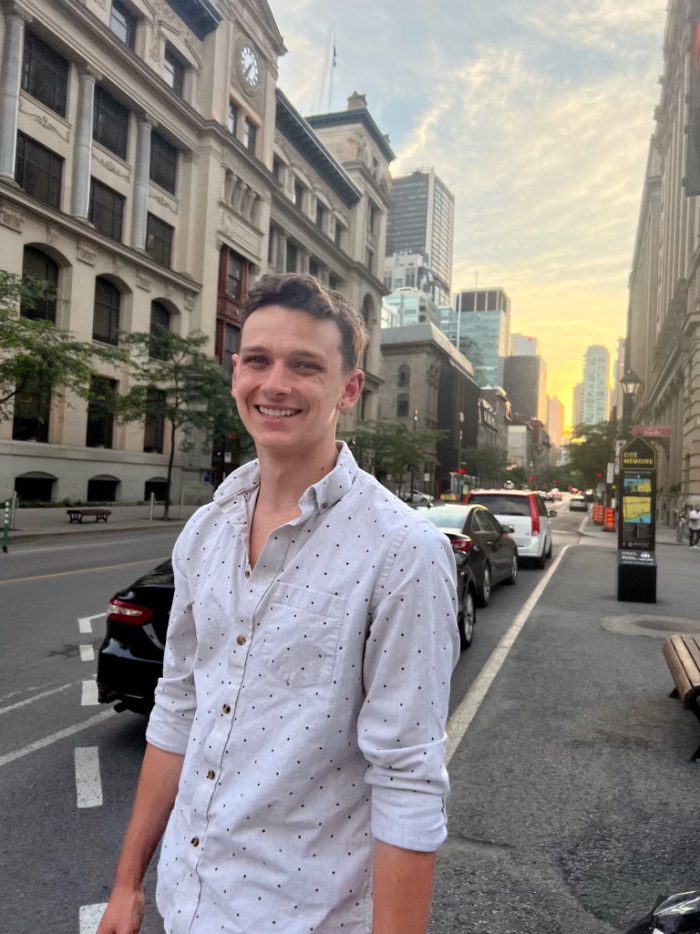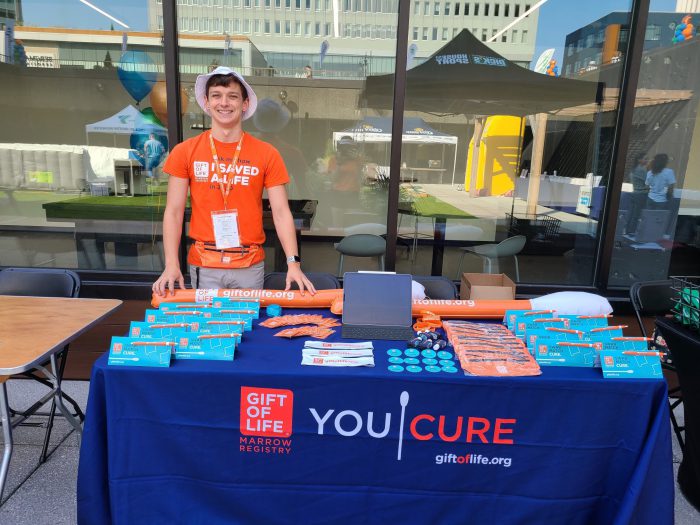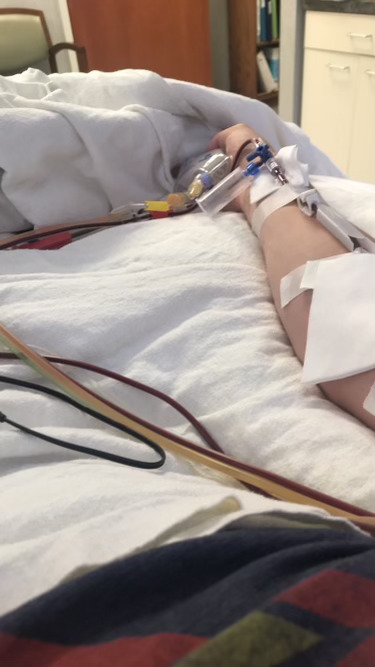Brendan Cappon signed up for Gift of Life thinking, “Why not?” As a past blood donor, he viewed a possible stem cell or bone marrow donation similarly: a bit of discomfort for him and a huge difference to someone else.
“I try as much as I can to do stuff like that because why not?” Cappon said. “I’ve got stuff that works so why not just give it elsewhere? It’ll come back.”
That mindset of “Why not?” ended up being that life-changing difference for someone else.
Just months after joining the registry, he was on a plane heading to Virginia to donate stem cells for a 58-year-old man with Acute Myelogenous Leukemia. Though donors and recipients are allowed and even encouraged to meet, the man opted not to meet Cappon, but that made no difference to the senior biomedical engineering student at Rochester Institute for Technology.
“I may never be in the same country or continent as them, let alone the same place, whether or not I knew them or planned to meet them,” Cappon said. “The anonymity behind it is kind of fun.”
It all started with a five-minute cheek swab and questionnaire from Gift of Life. The organization is responsible for connecting the two, which runs a national registry of possible donors for bone marrow and stem cells. Currently, there are over 437,000 donors registered, and over 26,000 matches have already been facilitated.
These matches can lead to transplants, either of stem cells, which is most common, or bone marrow in order to help those battling blood cancers like Leukemia. These matches don’t come easy, though. Just one in 430 people are called to be a donor in the Be the Match registry, which is the overall donor match program that Gift of Life is associated with.
The organization runs donor drive events across the country, including college campuses like IU. Gift of Life at IU recently held its Swab Week, where they set up tables all week to push for people to take five minutes to sign up and join the registry. Jane Georgas, a campus ambassador and president of Gift of Life at IU, said the goal of these events is to get as many people to register to increase the odds of a match.
“We try to get them with the hook of ‘Do you have five minutes to save a life?'” Georgas said. “That usually gets them in, and then we can explain to them what we are, what we do, who we’re helping and how just the little act of swabbing your cheek can give you the possibility to save someone’s life.”
These donor pushes can rake in dozens more added to the registry. For many in the organization, Georgas said it can be surreal to possibly help find a donor or to hear from the people the organization has helped save.
“We tabled at the first Thursdays festival and this girl came up and was like ‘Oh my gosh, I’ve never seen a Gift of Life table, I was saved by a donation,'” Georgas said.” That was just chills throughout the body, it was so heartwarming to see that people that could be living every day next to you might be saved by this registry.”
Despite experiences like these, Georgas said many are still hesitant to register, often because they fear the donation process and what it entails.
“The donation process seems really scary to some people because shows like Grey’s Anatomy may have covered it before, but they really dramatize it,” Georgas said. “Over 90% of the time, it’s through blood donations like if you were donating plasma, so it’s not as scary as it seems.”
Bone marrow donations can be more physically taxing and come with more post-operation pain, but when it comes to stem cell donations (or PBSC), which account for a majority of the donations, it’s even less so. For Cappon, the process was very similar to donating plasma, and even less taxing than donating blood.
It took about six days to do the donation, during which he’d sit for a few hours at a time as they used a machine similar to one used to donate plasma. Other than some needles and having to stay in the chair for extended periods of time, he said the process was relatively painless.
Cappon, now a campus ambassador for the organization at Rochester Institute for Technology, said he hopes his experience encourages other people to join, but like Georgas, he often meets people who are hesitant.
“There’s a lot of people that say no, for a lot of reasons, a lot of them that are extremely valid. But you just have some people where you’re like ‘Do you want to help fight cancer?’ and they’re like ‘No.’ And I don’t know what to do with that,” Cappon said.
Despite this, he said it’s all a matter of shifting their perspective.
“Sometimes you’re like ‘I don’t have time for this, I got to go to class, I got to do homework, I have 10 other things I need done in the next 12 minutes,'” Cappon said. “So it’s trying to use that time to shift their perspective on not just their lives and what they’re doing and what this means for them, but more so what it means for someone who’s going through things that are so much harder than some of the things we deal with on a daily basis.”
Although he’ll likely never know who he donated to, Cappon said it makes no difference to him, and it wouldn’t make a difference if he were to get the call again, either.
“Would it be cool? Sure, but do I ever need to? Absolutely not,” Cappon said. “I’d do it again in a heartbeat knowing that I still wouldn’t meet the next person I donated to.”












